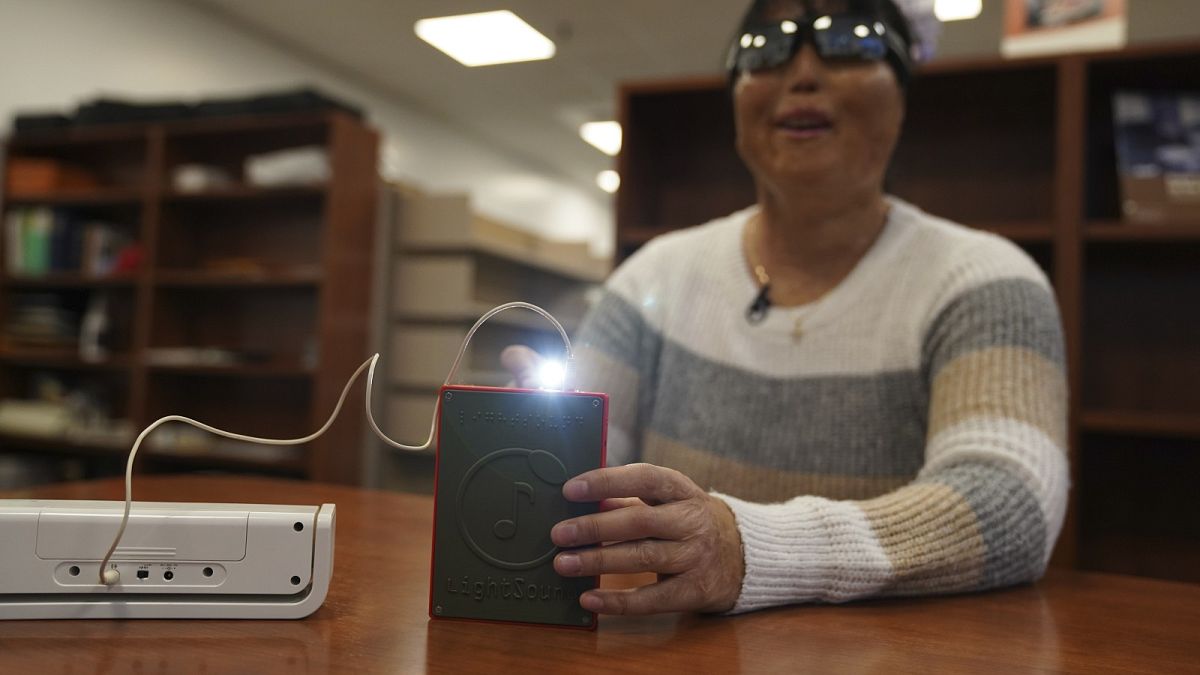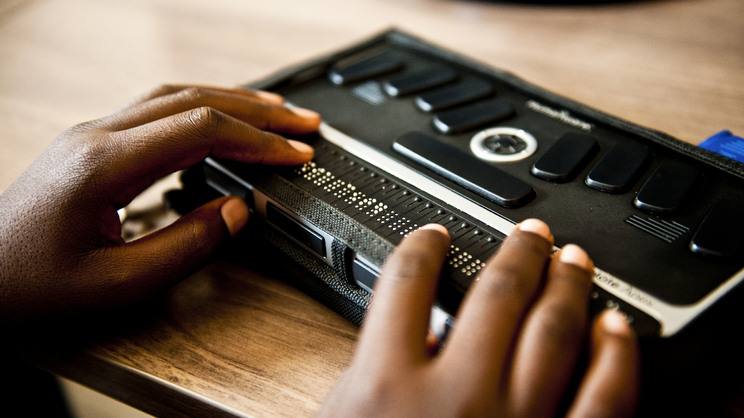Enhancing Lives With Advanced Assistive Tools for the Blind
The combination of advanced assistive tools for the blind is changing exactly how individuals experience their environments and interact with their areas. Advancements such as increased fact wise glasses and sophisticated digital traveling aids not only promote navigation however likewise improve general high quality of life. These modern technologies foster a sense of autonomy and self-efficacy among individuals, allowing them to carry out day-to-day jobs with newly found self-confidence. Nevertheless, the effects of these innovations expand beyond plain functionality; they challenge societal perceptions of handicap and freedom. What does this evolution indicate for the future of assistive modern technology and its function in equipping people?
Summary of Assistive Tools
Assistive gadgets for the blind encompass a diverse variety of technologies and tools developed to boost self-reliance and improve the high quality of life for individuals with visual disabilities. These tools deal with various demands, from navigation and flexibility to interaction and daily job monitoring.
Among the primary groups of assistive gadgets includes mobility aids, such as white walking sticks and guide canines, which aid individuals navigate their surroundings safely. Digital traveling help, furnished with sensing units and audio feedback, additionally play a considerable duty in flexibility enhancement.
Additionally, gadgets that aid with day-to-day living tasks, such as adaptive cooking area tools, Braille tags, and talking watches, encourage individuals to carry out tasks independently. Communication aids, including screen readers and Braille display screens, promote accessibility to info and make it possible for individuals to involve effectively with the digital globe.
Furthermore, low-tech options like magnifying glasses and large-print products remain vital for many users. Jointly, these assistive tools serve not just as functional tools yet also as important enablers of autonomy, fostering higher participation in a world that usually prioritizes sighted experiences. Their assimilation into day-to-day life is crucial for promoting inclusivity and enhancing general wellness for those with visual problems.
Ingenious Technologies being used
Advancement in technology has dramatically changed the landscape of tools offered for people with aesthetic problems. Among the most notable improvements are wise glasses incorporated with enhanced fact, which provide real-time navigating help and item recognition. These tools leverage advanced cameras and expert system to provide acoustic hints, improving the individual's spatial understanding and freedom.
In addition, mobile applications have become effective sources, allowing users to identify money, reviewed message aloud, and navigate strange environments through spoken instructions. Tools such as Braille display screens and refreshable Braille gadgets proceed to develop, offering smooth connectivity with smartphones and computer systems, thereby boosting communication and accessibility to details.
Wearable innovation, including smartwatches outfitted with voice-activated features, additionally encourages customers by promoting fast accessibility to alerts and signals without requiring aesthetic engagement. Tactile maps and 3D printing are likewise obtaining traction, providing substantial depictions of spaces that aid in orientation and mobility training.
Jointly, these innovative technologies not just enhance the every day lives of aesthetically damaged individuals yet additionally foster higher freedom, inclusivity, and engagement with the broader community, thus improving assumptions of access. (Voice-activated assistive devices)
Personal Stories of Empowerment
Empowerment often emerges from individual experiences that highlight the transformative effect of technology on people with visual problems. Take, as an example, the story of Sarah, a young musician that restored her interest for paint through making use of a smart walking stick furnished with barrier discovery. This tool not only facilitated her mobility yet instilled a newfound self-confidence, permitting her to browse public spaces independently and pursue her imaginative endeavors.

These narratives underscore the extensive impacts that advanced assistive tools can carry life. By making it possible for people to get rid of barriers, innovation promotes a feeling of autonomy and self-regard. Such empowerment tales function as a testimony to the capacity of technology, highlighting just how the right devices can considerably improve lifestyle and open doors to new possibilities for those with visual disabilities.
Benefits of Advanced Solutions
The integration of cutting-edge modern technology right into assistive gadgets substantially changes daily experiences for those influenced by vision loss. Speech-to-text devices for low vision. Instruments such as clever Braille displays and notetakers walking sticks equipped with sensors, navigating applications, and wearable technology are developed to offer real-time responses, improving spatial awareness and minimizing the risks linked with mobility.
Furthermore, advanced assistive technologies promote social inclusion by facilitating interaction and interaction. Voice-activated gadgets and apps enable people to gain access to details and involve with their environments individually, breaking obstacles that formerly hindered their participation in educational, specialist, and social settings.
Additionally, the customization and adaptability of these remedies deal with the varied demands of users, thereby boosting their total lifestyle. Enhanced functionality, such as item recognition and text-to-speech capacities, empowers individuals with visual disabilities to perform jobs that they may have when located challenging. Inevitably, advanced assistive technologies not only improve freedom and security but also advertise self-respect and self-worth, permitting customers to lead meeting lives.
Future Patterns in Assistive Tech
As modern technology proceeds to develop, the landscape of assistive tools for the blind is positioned for impressive innovations that will certainly further boost ease of access and freedom. Emerging fads in assistive technology indicate a change toward boosted assimilation of synthetic knowledge (AI) and artificial intelligence, allowing gadgets to adapt to individual user needs in real-time. These advancements are expected to assist in even more intuitive navigation systems that can recognize obstacles and provide audio feedback, substantially boosting outdoor wheelchair.
Furthermore, the growth of wearable tech, such as smart glasses outfitted with increased truth, will permit customers to get contextual details regarding their environments, thereby enhancing their spatial understanding. Furthermore, innovations in haptic technology assurance to produce tactile feedback devices, permitting individuals to view info with touch, boosting knowing and communication with their setting.
Telecommunication breakthroughs are also leading the means for remote aid services, where experienced professionals can supply guidance by means of video telephone calls, ensuring support is easily available. As these fads unravel, the future of assistive tools for the blind will most certainly foster better freedom, equipping people to browse their globe with self-confidence and convenience.

Final Thought
The assimilation of innovative assistive devices for the blind stands for a significant innovation in fostering independence and improving lifestyle. By utilizing innovative technologies, these tools empower users to navigate their settings with higher self-confidence and freedom. As the field proceeds to evolve, recurring r & d will likely produce much more advanced remedies, additionally changing the lived experiences of individuals with visual impairments and advertising a greater sense of inclusion within society.
The integration of innovative assistive tools for the blind is transforming exactly how people experience their surroundings and interact with their communities. The integration of innovative innovation right into assistive devices significantly transforms daily experiences for those impacted by vision loss.As innovation proceeds to develop, the landscape of assistive tools for the blind is positioned for impressive improvements that will certainly even more boost availability and independence. Arising trends in assistive technology suggest a change towards raised integration of artificial knowledge (AI) and device learning, making it possible for devices to adapt to private customer needs in real-time.The combination of advanced assistive tools for the blind represents a significant innovation in promoting freedom and boosting quality of life.